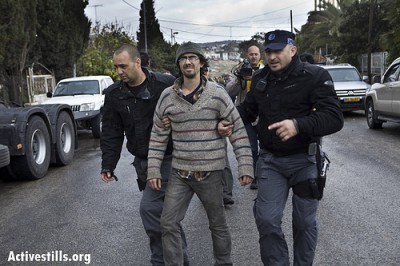Category: Reports
-
Israeli forces kidnap four in Beit Ommar
International Solidarity Movement 24 January 2010 At 4am on January 21st, at least 30 members of the Israel Police, Border Police, Army and Secret Police (Shin Bet) raided the village of Beit Ommar, arresting four men. At the home of Mohammed Salibi, the Occupation Forces broke the window of the door in an effort to…
-
Activist Ryan Olander released from immigration detention
International Solidarity Movement 23 January 2010 As the sun set behind watchtowers and barbed wire fences at Ramle prison Thursday January 15th, Ryan Olander emerged from the steel auto locking door and into the unrestricted air. Ryan had just spent 29 days locked in the Givon immigration detention center located in Ramle, Israel following his…
-
Protester Injured in Bil’in During Weekly Non-Violent Demonstration
Friends of Freedom and Justice 22 January 2010 Today 30 to 40 Palestinian, Israeli, and other international protesters marched through the West Bank village of Bil’in to the Israeli built separation barrier, ruled illegal by the International Court of Justice. Per usual, the demonstration was dispersed by tear gas projectiles and concussion grenades shortly after…

